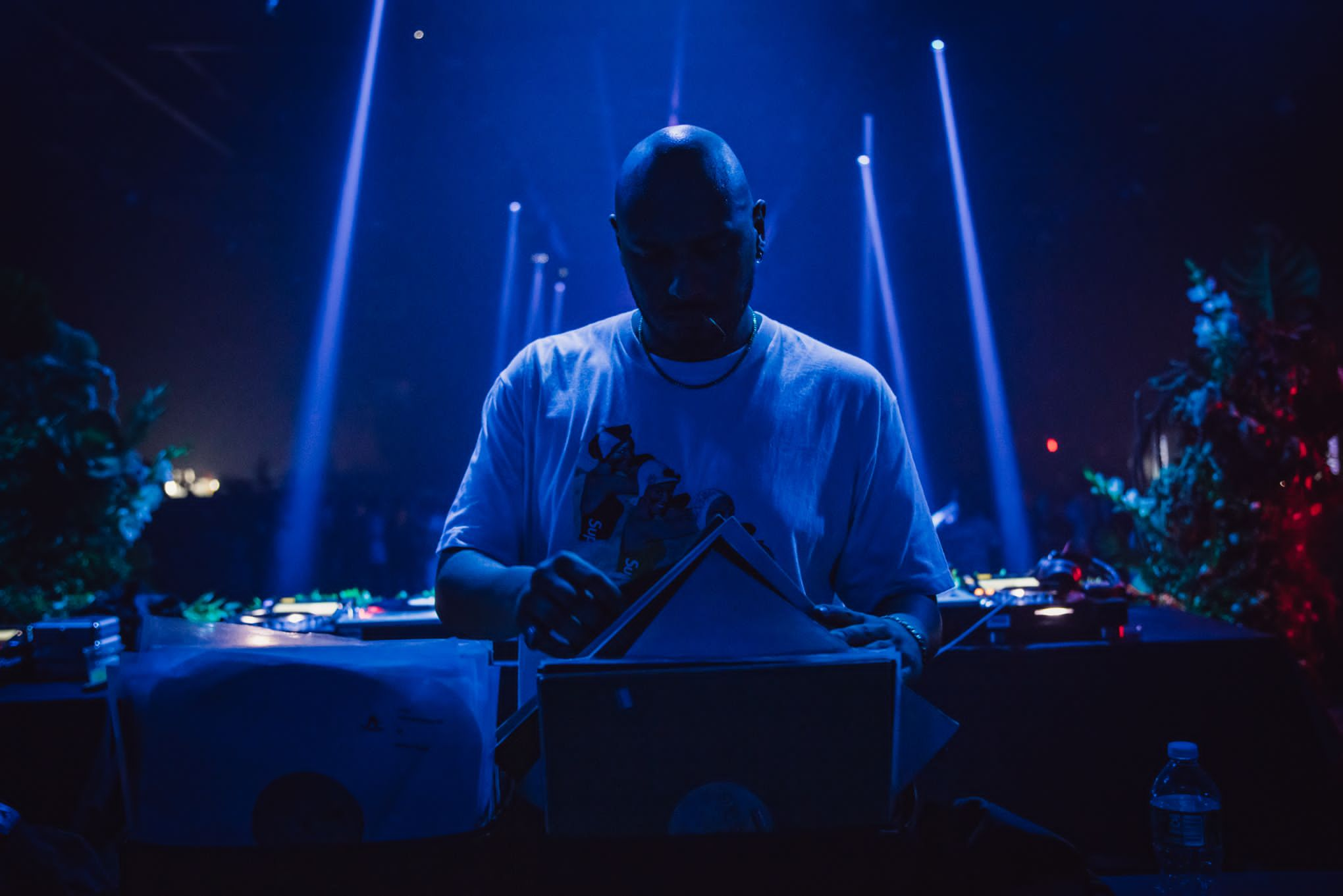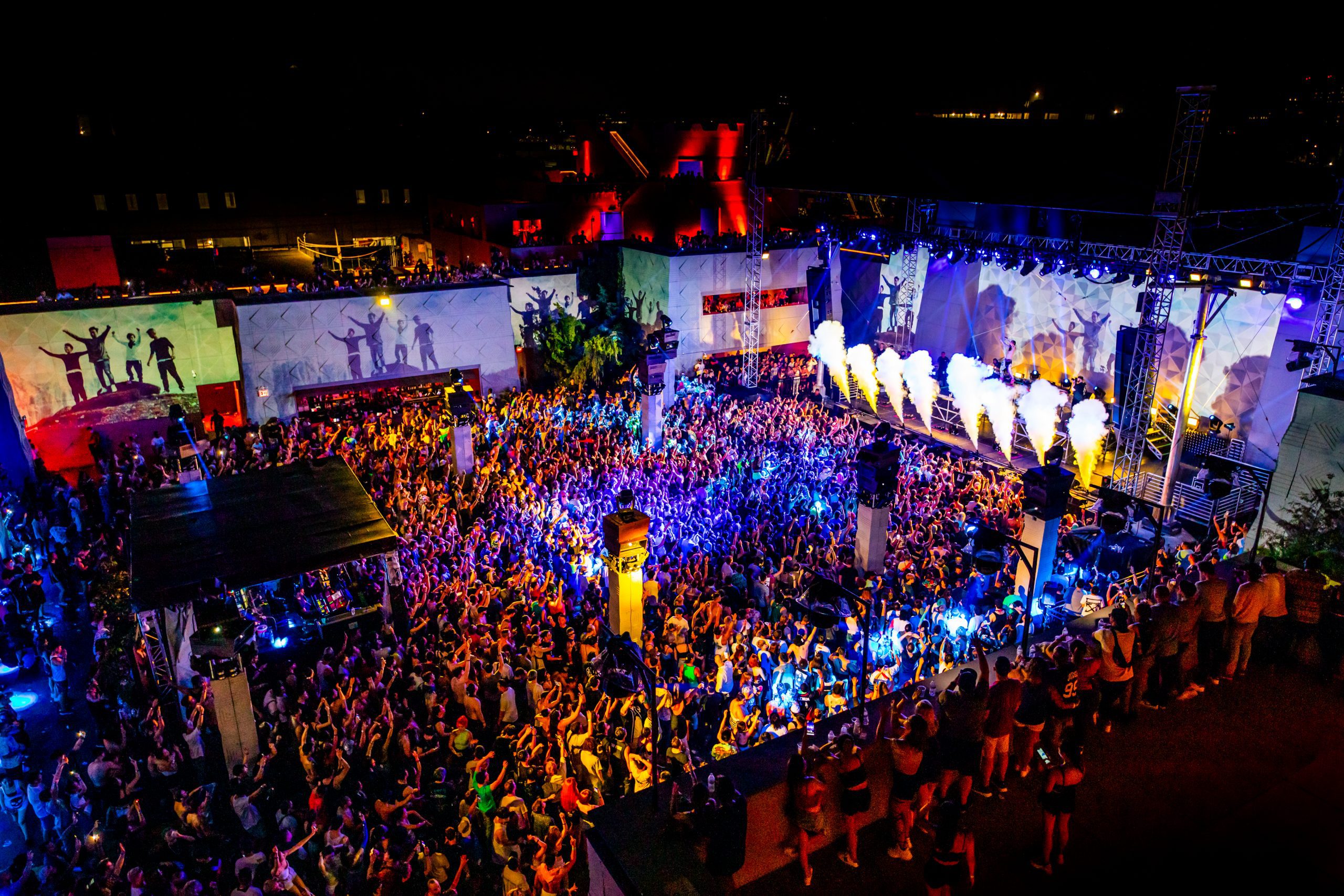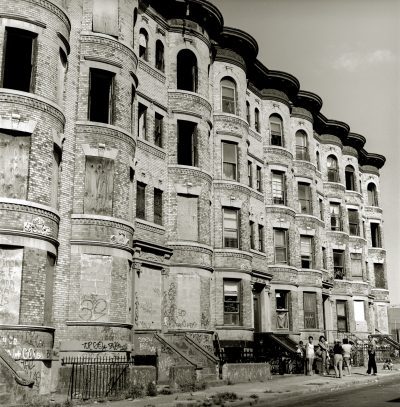The Great Hall at Avant Gardner. (Photo by Alive Coverage)
Brooklyn is undergoing a massive nightlife boom
'We are very much on track to have our own Roaring Twenties,' says one booster. Did the party scene ever leave? Where does it go next?
It’s 3 a.m. in Brooklyn on Halloween weekend. Costumed revelers roam the streets of East Williamsburg in search of the next party. Four-on-the-floor beats rumble out of the cavernous concert complex Avant Gardner. Inside, all 80,000-square-feet is full for CityFox’s sold-out show.
Outside, a trio dressed as a devil, demon and Donald Trump, debate where to go next as they inhale their halal chicken-over-rice platters.
The devil, battling hiccups, suggests ordering an Uber to the Brooklyn Navy Yard where Ibiza-born party Circoloco is going strong.
Trump insists they go to an after hours party in Bushwick.
The demon, chomping a piece of gum, proposes they call it a night. They have a 24-hour-long party to attend tomorrow.
Months ago, as covid ripped through the country, it seemed impossible to imagine thousands of people packed into warehouses—maskless and careless—dancing into the early hours of the morning.
With the city in lockdown, many skeptics preemptively declared New York “dead,” but if Halloween weekend proved anything—with its dozens of sold-out shows—it’s that New York is back … if it ever went anywhere.
The sheer number of events and marquee names gracing the party flyers, not to mention the new clubs opening every week, suggest that the city is not only alive and well, at least in terms of its nightlife, but perhaps better than its pre-pandemic self.
Ariel Palitz, the senior executive director of the city’s Office of Nightlife (a real department at the Mayor’s Office of Media & Entertainment) believes that a new golden era of partying is imminent, one rivaling the 1970s and ’80s when clubs like Studio 54, Limelight and Paradise Garage dotted the landscape.

Palitz: Nightlife mayor (NYC Office of Nightlife)
“We’re making nightlife history today that will be spoken about,” says Palitz who was appointed as the city’s first-ever nightlife mayor in 2018. “What we’re seeing now as we are still emerging and recovering from the pandemic is in fact a true resurgence of New York much like after the 1918 pandemic was the Roaring Twenties. We are very much on track to have our own renaissance and our own Roaring Twenties.”
After 18 months of social isolation, Palitz says it’s natural for people to want to go out again. And with more than 67 percent of the city’s residents vaccinated, she says New Yorkers are doing just that. (Though the Delta variant has thrown a bit of a curveball. More on that later.)
“Dancing is really going to start taking center stage again,” she says. “People just want to let go, be together, listen to good music and feel alive—and that’s a perfect recipe for great nightlife.”
In fact Palitz, is such a booster that her office released a 160-page report in June recommending the city create a permanent nightlife museum that pays homage not only to the great clubs of the past, but also the iconic venues operating today.
A new club boom
With more people wanting to let loose and see their favorite artists, there, of course, need to be dancefloors.
In just two weeks, at least four venues have opened, including The Q, Nebula, Boxers and House of X at the Public Hotel, a joint venture between Studio 54 cofounder Ian Schrager and the team behind Bushwick’s House of Yes.
Brooklyn’s role in this resurrection cannot go ignored. The borough has been the epicenter of electronic music in New York for years now.
The borough’s unique urban makeup of forgotten waterfront lots and warehouses lining Newtown Creek means bigger parties, fewer noise complaints and grittier gatherings. And with rising rents in Manhattan and the proliferation of ridesharing apps, moving across the East River was an easy decision for party promoters.
The majority of the city’s large-format venues, not to mention its after hours parties take place almost exclusively within the borough, which has always renounced the bottle service vibes of Manhattan for an anything-goes no-frills environment.
Brooklyn is the only borough where electricity usage actually increases after 7 p.m., according to both Con Edison and Brooklyn Borough President Eric Adams, the mayor-elect.
While new venues are opening every week, there are many spots that existed pre-pandemic that are still going strong. For example, on any given weekend, lines wrap around the corner at Elsewhere, Brooklyn Steel and Avant Gardner in industrial North Brooklyn.
The warehouses along the water in Sunset Park and in the Brooklyn Navy Yard also routinely host events. Nowadays, which houses the extremely popular Mr. Sunday party, now has a permanent space on the Ridgewood-Bushwick border.
Pablo Romero, a Queens-born DJ and light and sound technician, says he’s witnessed the scene change over the years—and that there is a lot to be optimistic about.
“Sadly clubs like Output and Cielo had to go away, but there’s still hope for New York,” says Romero, who owns a record store in Dumbo. “There are new clubs like Public Records, which has a very high potential to be one of the best. Obviously there are the underground parties; you have After Moth and Apollo Studios doing really unique things. Teksupport can be the face of New York on an international level. It feels great to see the city busy on all angles. These are parties that really matter.”
He also mentioned Good Room in Greenpoint as a staple of the scene, as well as Le Bain at The Standard Hotel, calling it one of the last “pure” nightclubs in Manhattan.


Pablo Romero digs through his vinyl records at a recent Teksupport event. (Photo by Michael Poselski)
While he wouldn’t go as far as to say New York is experiencing a golden era of partying, he conceded that it’s on the way, especially if venues suffering financially from the pandemic like Good Room receive aid, and if there is a renewed emphasis on supporting local talent and granting residencies to artists. Williamsburg’s TBA Brooklyn, he says, is one such venue that consistently opens the decks to up-and-coming DJs.
A more collaborative scene
A 2019 study by the Office of Nightlife found that the industry supports 299,000 jobs, generates $13.1 billion in employee compensation, and produces $35.1 billion in total economic output. At that time, there were also more than 25,000 venues contributing $697 million in local tax revenue.
An unintended but positive consequence of the pandemic, according to those in the scene, is a new sense of collaboration like the project between Schrager and House of Yes. In an industry clouded by clout and competition, new party promoters and collectives emerged during the shutdown when larger venues couldn’t operate due to city mandates.
“What the pandemic really was extraordinary in doing was motivating the hospitality and nightlife industry to come together in a way that was only dreamt about before the pandemic,” Palitz says. “Wouldn’t it be great if we could just align and harness our power and voices to speak for ourselves and make changes? This pandemic really did that, and we saw the emergence of so many alliances.”
Case in point: Avant Gardner’s marketing director, Hayata Ishikawa, says his company, which also operates The Brooklyn Mirage in the summer, is collaborating with groups that they haven’t worked with in some time.
“Pre-pandemic there was a certain tension in the scene because it was so competitive,” he says. “After, a bit of New York’s soul was revived. Now, everyone is a bit more understanding and looking toward creating a more welcoming environment. There’s a sense of community that came back. It’s what New York needed.”
Pablo Romero, the DJ, says that while the pandemic has obviously been terrible, a lot of people found new direction in life as they returned to their real inspirations and became more loving and grateful.
“Everybody in the scene, we all suffered during the pandemic,” he says. “A lot of us lost hope, but slowly things changed. Now work has been at a great volume, and the right people are doing the right things, the scene is bouncing back well.”
Not out of the woods yet
While vaccines and boosters are working, the city isn’t out of the pandemic yet. The number of people testing positive for covid is increasing slightly with a daily average of 713 confirmed cases in the past 28 days, according to city data. Ninety-nine percent of tested cases in the last four weeks have been the Delta variant, known to spread faster and cause more infections.
Even with proof of vaccination required at all venues, it’s not unreasonable to suggest that these large gatherings are causing an uptick in cases. And with winter approaching and people moving indoors, it remains to be seen how covid will impact the industry. Additional positive cases combined with a traditionally slow season for nightlife, according to Ishikawa, could undo months of progress.
“The next six or so months will really shape the next five to 10 years of what the scene will start to look like,” he said. “It’s really going to test a lot of people.”


The Brooklyn Mirage at Avant Gardner (Photo by Eric Cunningham)
You might also like 


























